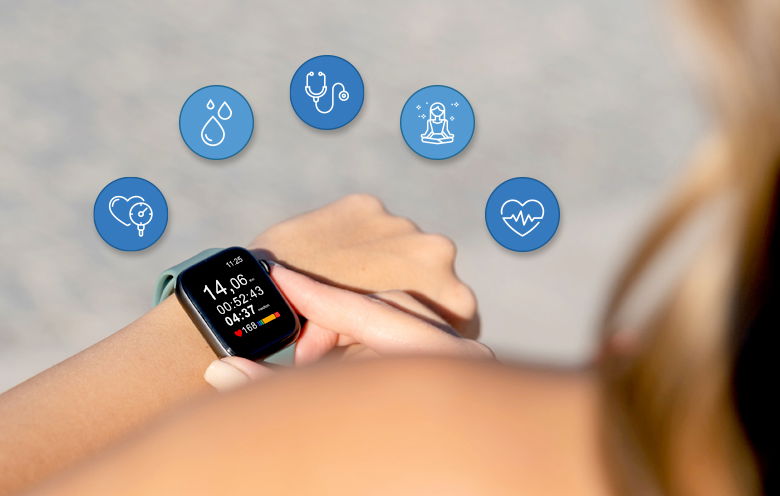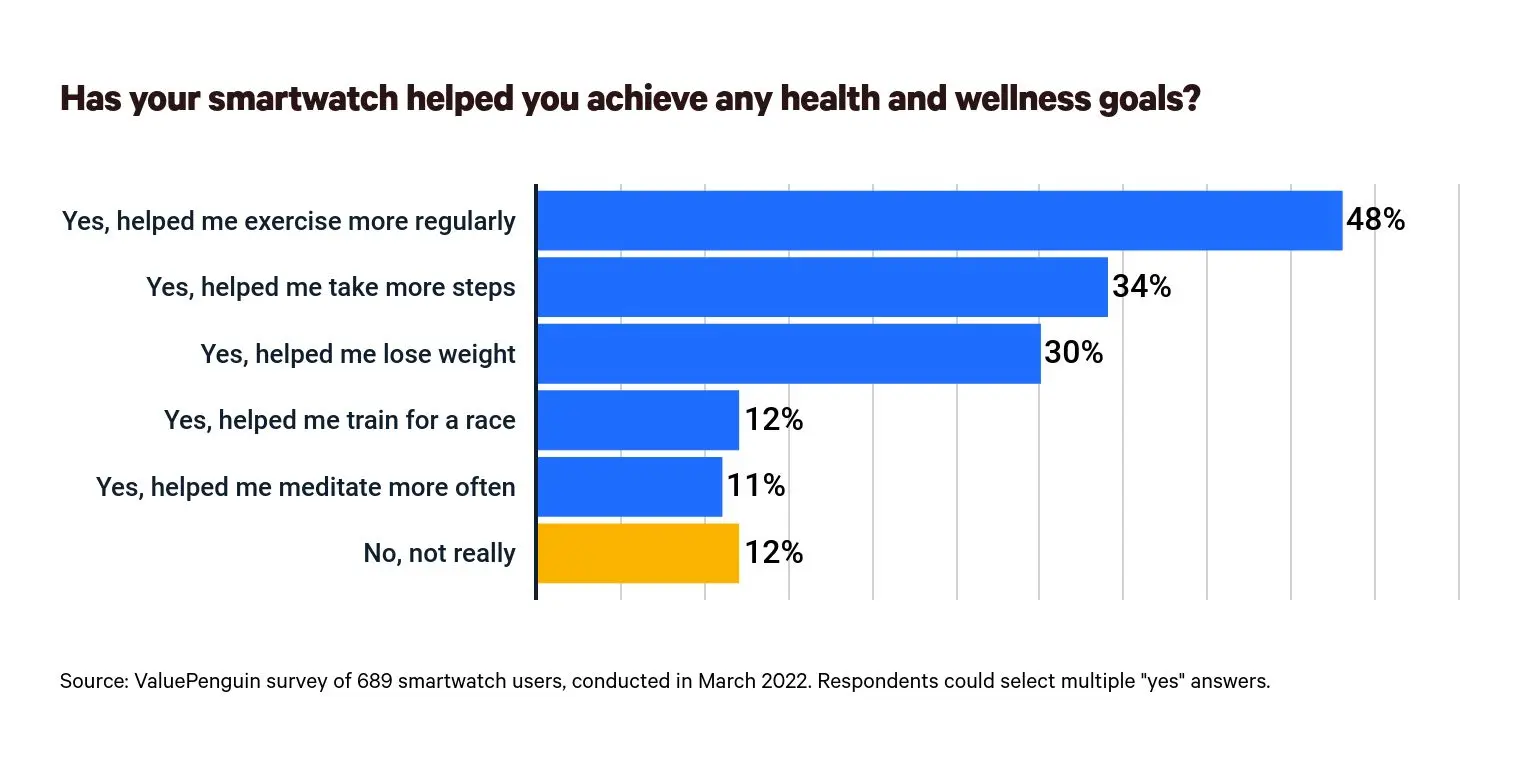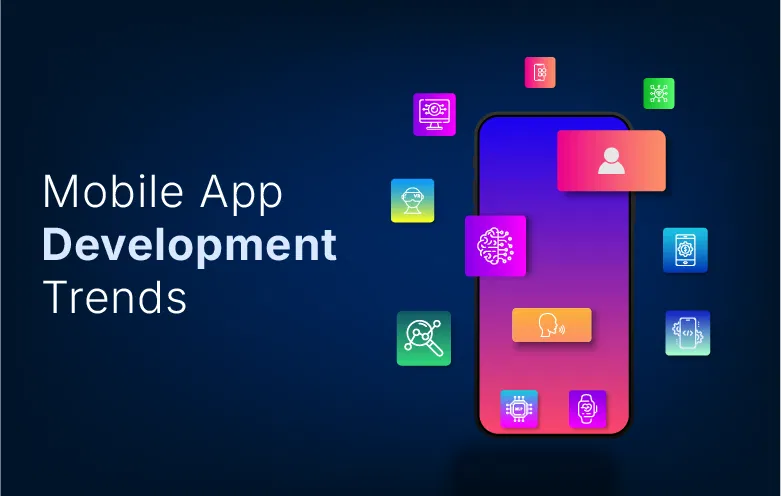Smartwatches have gained popularity in the last few years. It has become a household item like a wristwatch or wall clock. From changing music tracks to measuring heartbeats and sleep cycles, smartwatches have become a consumer favorite tech product. With other advanced features like glucose monitoring, blood pressure monitoring and more, smartwatches can help healthcare providers to offer improved patient care.
According to the latest ValuePenguin survey of more than 1,500 smartwatch users, 42% have talked to their doctor about their information on topics such as heart rate and sleep.
Healthcare smartwatch applications are revolutionizing the way hospitals and clinics provide healthcare services. With smartwatches and wearable devices, seeking health advice has become accessible. Patient data has become handy to access and share with doctors. This blog highlights smartwatch use cases for healthcare and their benefits in detail.
Remote patient monitoring
In the pre-COVID era, patients were hesitant to try telemedicine or discuss their health issues over a voice or video call. According to August 2019 Harris Poll, two-thirds of patients were open to the idea of telehealth, but only 8% had tried it. However, the pandemic has changed the way people pursue healthcare solutions.
Remote patient monitoring (RPM) has gained traction in the past couple of years. With the rise in smartwatch app development, it has become easier to gather patient-generated health data (PGHD) and send it to healthcare professionals. RPM is used to help the following patients:
- Who suffer from chronic illness
- Who are in isolated or remote locations
- Who are discharged recently
- Who require constant surveillance
Smartwatch for detecting cardiac dysfunction
Smartwatches record vital signs like heart rate, SpO2, skin temperature, step count and more. This critical data, when shared with healthcare providers, can help in detecting underlying diseases at an early stage. The Apple Heart Study and other studies have shown that ECGs in smartwatches can detect atrial fibrillation.
The smartwatch records heart rate and when it reports any anomalies, it sends notifications to the concerned person. This data provides alerts regarding the patient’s risk of an oncoming heart attack or stroke and sends reminders about medical appointments. In such cases, doctors can also receive the patient’s data remotely and suggest appropriate treatment immediately.
Smartwatch for elderly
Seniors can benefit from a multitude of smartwatch features, such as:
- Access to medical alerts
- Fall detection
- Heart rate monitoring
Almost one-third of people aged over 65 fall each year and this percentage climbs to 32% for those over 70. – WHO
Smartwatches with inertial sensors can detect a fall. If the person is unable to get up after a fall or deactivate local alarm, an alert is sent to the smartwatch app and to the concerned person.
Smartwatch for seizure detection
A smartwatch built with electrodermal activity (EDA) sensors, a gyroscope, or motion sensors can be used to gauge epileptic seizures. With smartwatch apps, healthcare providers can receive data about abnormal motion episodes experienced by their patients. Individuals prone to epilepsy can also share episodic data captured by their smartwatch with their care providers.
Note: There are several different types of seizures. Smartwatches can’t detect some of them like complex partial seizures and absence seizures.
Benefits of smartwatch apps for RPM
- Increased patient engagement – Smartwatches allow patients to play a crucial role in managing and understanding their health conditions.
- Enhanced quality of care – Healthcare providers get access to more relevant patient data. This allows them to improve the overall quality of their services.
- Better access to healthcare – With smartwatch apps, healthcare providers can access patient data remotely and provide value-based care.
- Improved patient satisfaction – Any potential issues can be identified in a timely manner. This gives patients and healthcare professionals a sense of assurance.
Fitness tracking with smartwatch app development
According to the ValuePenguin survey, more than 9 in 10 (92%) smartwatch wearers use them for health or fitness reasons, with 88% saying their watch has helped them achieve a fitness goal. Regular exercise (48%) and increasing steps (34%), are the most frequently cited goals.
The fitness industry is growing rapidly with the number of smartwatches and fitness trackers increasing exponentially. People have started becoming conscious of their health. However, they also look for personalized solutions that help them achieve their fitness goals. Smartwatch users tend to move to a different solution or quit altogether if their goals aren’t met.
Fitness service providers can leverage the data recorded by smartwatches to customize diet and workout plans for their customers. This will help them improve their customer retention rate as this industry thrives more on repeat customers.
Benefits of healthcare apps for fitness services providers
- Better user engagement
- Cost-savings
- Opportunities to develop virtual training programs
Has the COVID-19 pandemic paved the way for smartwatch health applications?
The unprecedented pandemic has made people somewhat more cautious about their health. With the rise of smartwatches and other wearable devices, it has become easier for users and healthcare providers to access health data. Before, there were limitations to the features that smartwatches offered. However, with COVID-19 havoc and technological advancements, smartwatch apps have become smarter and more efficient.
As discussed earlier, data from smartwatches can also enhance remote patient monitoring. This prevents unnecessary exposure of medical professionals to contagious diseases, and for patients to be assisted remotely without visiting their doctors and further risking their health.
Ready to build your own smartwatch healthcare solution?
Let us help you turn wearable tech into a powerful tool for better care and engagement.
Offer better care with smartwatch apps
In this customer-centric business world, it is important to provide solutions that are crafted to meet individual needs. Smartwatch allows doing so for healthcare and fitness service providers. Healthcare practitioners can offer better treatment to their patients with the data handy from users’ smartwatches. Also, fitness solution providers can plan meals and exercises according to their users’ physical activity data gathered from smartwatches.
Certainly, the world after the pandemic has changed, and so has the way healthcare and fitness are perceived. With the increase in the number of smartwatch users, healthcare and fitness professionals have started leveraging health data to increase customer satisfaction and efficiency. Softweb Solutions’ smartwatch app development team has developed solutions for leading wearable companies. If you are looking for similar solutions, feel free to contact us to discuss further.




